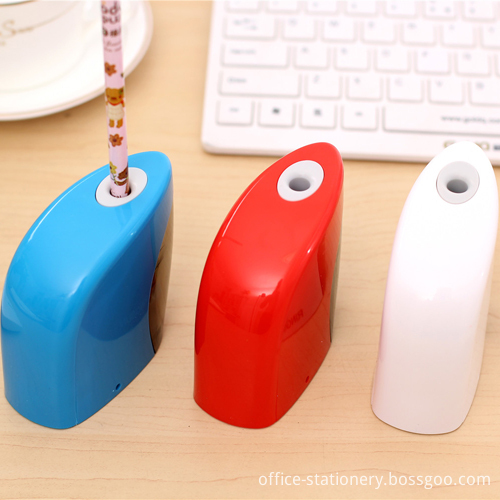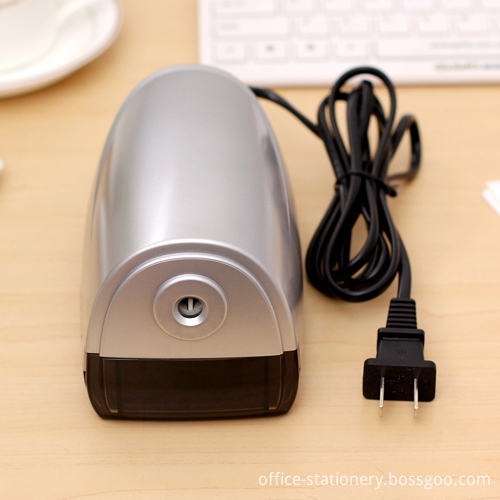Q: "Dark and expensive hardwood furniture" light industry standard (hereinafter referred to as "new line standard"), listed 101 dark and valuable hardwood furniture tree species, including the national standard that has been listed in "Redwood" (GB/T 18107-2000) (hereinafter referred to as "redwood national standard") all the tree species (33), and 68 tree species not included in the "redwood national standard", that is, 33 species of redwood as part of the dark and precious hardwood group at the same time meets " The new line standard and the "redwood national standard", while the other "68 tree species" meet the "new line standard" but do not meet the "redwood national standard". What is the difference between the professional and the "Redwood National Standard"? What is the difference between 101 dark-skinned hardwood furniture species and 33 redwood species?
A: In 2008, the “New Standards†issued by the National Development and Reform Commission listed 101 dark-colored expensive hardwood furniture species. This standard replaced the 1999 young industry standard “Furniture Dark Hardwood Furnitureâ€. The dark-colored expensive hardwood in the new standard refers to the general term for a class of commodity wood produced in tropical and subtropical regions. The characteristics of this type of wood are:
1. The material is hard, heavy and stable, and most of the heartwood and sapwood are distinct;
2. The heartwood pattern is beautiful, resistant to corrosion and insects; mostly for loose pores or semi-annular pores.
The “New Mark†lists 101 dark-skinned hardwood furniture trees in three parts. The first part has 43 species,
It includes all 33 redwood species; the second part has 36 species, mainly from the national standard "China's main imported timber name" (GB/T 18513-2001), most of which are expensive or high-quality imported wood, which is the traditional furniture industry. A large number of species that are available for development and have relative resource guarantees. The third part has 22 species, mainly from the national standard "China's main wood name" (GB/T 16734-1997), which can be used by enterprises to use domestic hardwood and dark precious hardwood furniture decoration materials.
The definition of “redwood furniture products†has also been added to the new line standard, namely: “In the dark and expensive hardwood furniture products, the products conforming to the provisions of GB/T 18107-2000 “Redwood†are called mahogany furniture productsâ€, and The introduction states that mahogany furniture is only part of the dark and expensive hardwood furniture. Since it is a part, the 33 redwood tree species are of course in line with the definition of dark and expensive hardwood and meet the characteristics listed in the above 1, 2; but in addition, 33 groups of redwood species have their own unique characteristics.
In 2000, in order to standardize the market conditions of the chaotic name of mahogany products and ensure the quality of products, the National Quality and Technical Supervision Bureau issued the National Standard for Redwoods (GB/T 18107-2000). As a drafter, we know that the formulation of the “Redwood National Standard†has been thoroughly studied and discussed, and the basis for the selection of redwood species has been determined. The main aspects are as follows: 1. The angle of wood anatomy (ie, the classification of plants: mainly includes Anatomical features), 2 wood features of the pieces of furniture in the Ming and Qing Dynasties (historical and cultural lineage); 3 current mahogany furniture materials; 4 also refer to wood specimens and materials that are well-known at home and abroad. The 33 species identified by the Institute belong to the genus Pterocarpus, Dalbergia, Diospyros, genus and genus, and are classified as rosewood, rosewood, fragrant wood, black rosewood, and red rosewood. , ebony, striped ebony and wenge wood 8 categories, known as "5 genera and 8 classes", mainly red sandalwood and Dalbergia, and most of them imported from Southeast Asia, tropical Africa and Latin America.
At the same time, the "Redwood National Standard" also stipulates whether the furniture materials belong to the 8 categories of mahogany. In addition to its most important plant taxonomic status (the so-called "blood lineage" basis, it must also meet the remaining three prerequisites - structure, Density and color of the heartwood.
For the case of rosewood, the "redwood national standard" stipulates that: 1) must be a tree species of Pterocarpus spp.; 2) the timber structure is very fine to fine, and the average pipe hole diameter should not exceed 200 microns; Air dry density is greater than 0.76 g / cm 3 (when wood moisture content is 12%); 4) heartwood, reddish brown to purple red, often with dark stripes. If the above four prerequisites are not met, even the wood of the genus Sandalwood cannot be classified as rosewood. For example, African red sandalwood (Pterocarpus soyauxii) is a sub-pear (the market is also commonly known as grass pear, red pear, etc.), although it is also belonging to the genus Pterocarpus, but its structure is thicker, the average tube hole chord diameter is greater than 200 microns; air dry density is lower than 0.76 g / cm 3, so it is not included in the 33 redwood species of the "Redwood" national standard (in 2008, included in the first part of the "new line standard" 43 trees).
Consumers can find out the details of the necessary conditions of 33 redwood species in the "Redwood" national standard, and can refer to other reference books, such as "Southeast Asian Tropical Wood", "African Tropical Wood" and "Latin American Tropical Wood". The corresponding indicators of other tree species other than 33 species were found. The comparison between the two species basically shows what conditions the tree species do not meet the "redwood national standard".
The chord diameter, density, color and other indicators of the tube hole determine the fineness, weight and appearance of the wood. The wood with different indexes is reflected in the engraving effect, feel, hardness and color of the furniture (before the color is not painted). It will be different. It’s just that it’s made of furniture and it’s not easy to distinguish with the senses. 33 kinds of mahogany are selected according to the necessary conditions determined by multi-party research, taking into account factors such as Chinese historical and cultural lineage, resource rarity, etc., and are selected and named with reference to wood specimens that are well-known at home and abroad, most of which are precious and scarce species. Therefore, the 33 mahogany furnitures determined according to these standards basically carry the connotation of the term “redwood†that China has extended to date in terms of quality of materials, cultural heritage and preciousness of resources, and maintain the preciousness of mahogany furniture. Distinguished, luxurious, heavy historical sense and rich Chinese cultural taste, this is the status of mahogany in domestic and foreign furniture materials.
In the market, some furniture is made of wood belonging to 101 kinds of dark and expensive hardwoods, such as Guibourtia and Swartizia, which have good patterns, colors and materials. Some merchants have the behavior of climbing branches, called “Brazilian rosewood†and “red sandalwoodâ€. Although these two types are similar in appearance and color to rosewood and red rosewood, they are not 33 species of redwood. , should indicate the correct name of the specification, otherwise it is easy to mislead consumers. These two types of timber have only been imported from Africa and Latin America in recent years. They have not been used in furniture materials in the Ming and Qing Dynasties. In addition, in the current market, furniture and wood flooring are also commonly used to pick up Dialium, Afzelia, Intsia, Pericopsis and Rengas, including Glutahe. ) and some imported woods of the genus Melanorrhoea, all of which belong to 101 kinds of dark and precious hardwoods, which are easy to be mixed with mahogany. Please ask merchants and consumers to improve their ability to identify true and false mahogany.
In summary, the dark and expensive hardwood is a broad concept. The 33 species of redwood are only some of the rarer and more precious species. The industry standard of "Dark and expensive hardwood furniture" is not a revision of the national standard "Redwood". To expand, the two standards discuss different scopes of objects and cannot be confused. For example: a consumer's furniture is marked to meet the industry standard of "Dark and expensive hardwood furniture", only that the material should be within 101, not specified within 33; vice versa if the purchased furniture is marked as "Redwood" "The national standard, its materials should be within 33 kinds, and also inevitably meet the "new line standard" that is within 101 kinds. Some consumers think that since nearly one-third of the 101 species are mahogany, then the purchase of furniture marked with the "new standard", the possibility that the material is mahogany should also be 1/3. This is another misunderstanding, because at present, the business has a commercial motive for the labeling of “climbing the branchesâ€. Conversely, the furniture for the mahogany (all) is only marked with the industry standard of “Dark and expensive hardwood furniture†and not marked with the “Redwood†country. Standards are not very likely, and no commercial motives can be found. In reality, there is no such example (here refers to all mahogany furniture, and the main materials are discussed separately afterwards). Therefore, it is recommended that consumers who wish to buy real mahogany furniture should honestly purchase furniture that is marked with the national standards of "Redwood" in order to protect their interests. The range of redwood species has never been expanded since the promulgation of the "Redwood National Standard". We must respect history and respect reality. The definition of redwood cannot be changed at will. If it changes, it will lose its cultural connotation and its proper status in domestic and foreign furniture materials.
Finally, it should be emphasized that when buying and selling mahogany and dark precious hardwood furniture, the logo of the material can only be used to the name of the wood, that is, the category of the commodity; from the perspective of tree taxonomy, it is generally only Genus, not "species." The name of the wood must be the standard name in the above-mentioned "Redwood", "China's main wood name", "China's main imported wood name" national standard or "Dark and expensive hardwood furniture" light industry standard. The name of the wood is in Chinese, Latin or trade name, so that both buyers and sellers understand and transparent, and promote the healthy development of traditional furniture.
Accept Small order!!
We are
professional manufacturer for electronic Stationery since 1993, Providing
one-stop solution from design, R&D, Quality control, mass production,
Export etc., our key partner are staples, Essetle, Acco and so on, Technology
and production is best for you. License:
ISO9001,ISO14001,Reach, Rohs, CE,UL,FCC,SEDEX.
Type: USB Pencil Sharpener ,Heavy Duty Pencil Sharpener,Helical Blade Pencil Sharpener,Auto Pencil Sharpener
Feature:
1.Auto feed, auto stop, auto release, totally hands free, convenience and effortless, fashion surface
2.Powerful sharpener, especially designed to get a perfect writing "point" and make your pencil more durable.
3.Saving power, battery or AC adaptor,
4. Flat blade or helical blade

Electric Pencil Sharpener,Mini Electric Pencil Sharpener,Electric Pencil Sharpener Usb,USB Pencil Sharpener,Heavy Duty Pencil Sharpener,Helical Blade Pencil Sharpener,Auto Pencil Sharpener
Ringsun Holding Ltd , http://www.ele-office.com